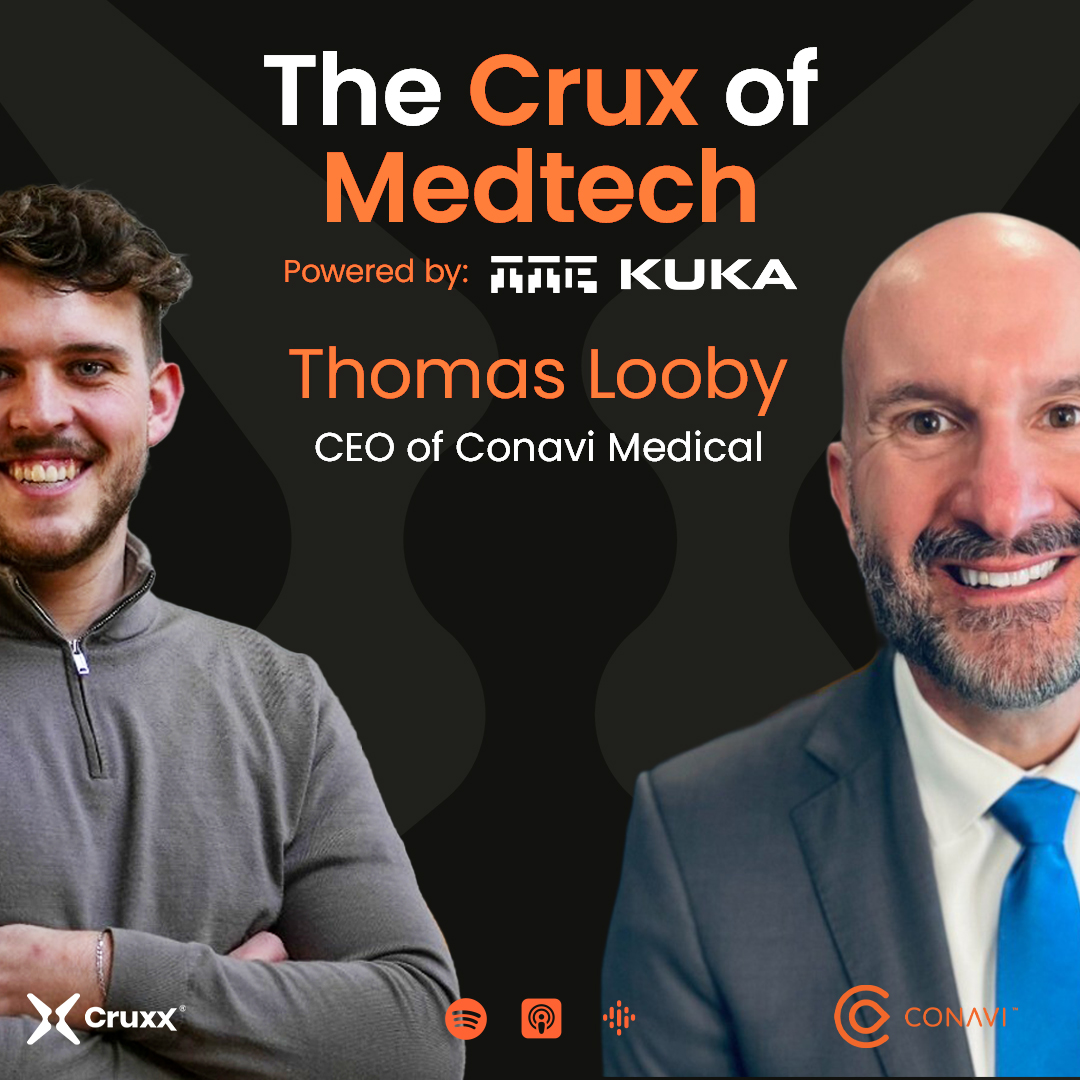Robotics can be used to support a number of delicate surgeries. On Episode 16 of The Surgibots Podcast I spoke to Christoph Spuhler, the CEO and Co-Founder of AcuSurgical, to talk about the way his company is changing the face of retinal surgeries. Christoph’s background is in medical imaging, which has influenced the direction of AcuSurgical’s devices. Read on to find out what they’re doing.
How much of an improvement does your robot give surgeons compared to the way that retinal surgery has traditionally been done?
There's multiple aspects to this. One is the precision. With our robots, we can augment the precision from about 100 micrometres down to five. That helps the surgeon to feel more at ease and manipulate the tissues with much more precision, which is great. The robot also assists with tremor reduction. If the surgeon does tremble, we can filter it out by putting in place virtual fixtures or virtual bounce so that the surgeon can’t touch structures that they shouldn't be touching. For example, if you’re doing virtual retinal surgery, if you touch the the lens in the front of the eye, that creates a cataract, so you have to avoid touching the lens. We can put in fixtures for that, so that the researcher won't be able to touch those structures.
There are other applications as well, such as subretinal injection, which is when you have to inject something into the retina. That's becoming more and more frequent. A lot of different companies are developing gene therapies and cell therapies to restore vision or heal patients that are suffering from various diseases on the retina - for example hereditary diseases that cause the retina to lose sight over the years, or AMD, which is age related macular degeneration, which affects one person out of three in the world. Now there's new treatments that are going to be coming on the market to treat those diseases. But the problem is they require the surgeon to inject directly in the retina. And the retina is tiny, right? So you have to inject exactly the right place, making sure not to rip open a huge hole and make it worse than it already is. That's incredibly difficult. There's only a couple surgeons in each country that are able to do that. But, with the robot, we can inject with high precision, which makes those treatments and gene therapies much more viable due to a higher quality delivery.
Do you foresee this robot improving skills for surgeons who are currently already doing retina surgery, or do you see it as a gateway for less skilled surgeons to learn retinal surgeries?
It's a little bit of both. Our goal is not to replace the surgeon, our goal is to augment the surgeon. We always say to the surgeons that we're partnered with ’you know how to do the surgery, but with the robot, you can do even better. You can have better control and better precision.’ The second part is that people are getting older, so there are going to be more and more patients in the next 10-20 years, and there's not enough surgeons to treat all of those people. There's already a shortage today, and those surgeons take a long time to be trained, and we're just not able to train enough surgeons at the moment to treat those patients. What the robot is going to do is accelerate the learning curve, and maybe allow surgeons that are not necessarily specialists on the retina to do certain interventions.
There's publications and studies that have been done which show that the first 150 or so patients that are treated by a surgeon when they come out of medical school have suboptimal results compared to what an experienced surgeon can do. That’s huge. With the robot, we can accelerate that learning curve and get surgeons up to a high level much faster, which improves patient outcomes.
How quickly do you think the enabling technology can augment the surgeon so that those sub optimal surgeries are not happening?
That's difficult to say, because we don't have studies at the moment. But, what we can see at the moment is that when we have surgeons come in and try the robot, there's almost a light bulb going off in their head, and their eyes start sparkling. When they use the robot, they're like, ‘Wow, it's amazing, I'm much more precise and steady with my hands, it's just a different experience.’ What helps the surgeons is that once they’ve seen the robot, they understand how much better they need to be, whereas if they haven't tried the robot, it's kind of abstract. But when they actually try it, they see right away their amazing potential. That creates a lot of demand.
To learn more about developing retinal procedures through surgical robotics, tune into Episode 16 of The Surgibots Podcast here.





